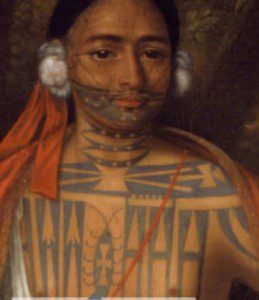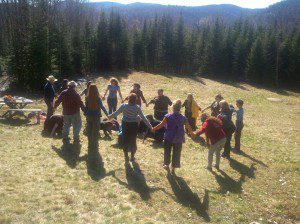
“The Iroquois have, properly speaking, only a single Divinity – the dream. To it they render their submission, and follow all its orders with the utmost exactness.”
– Father Jacques Frémin, S.J., 1669-70
Long before the first Europeans arrived in Northeast America, the peoples of the Longhouse, or Iroquois, taught their children that dreams are the single most important source of both practical and spiritual guidance.
The first business of the day in an Iroquois village was dream-sharing, as dreams were messages from the spirits, and the deeper self, and might contain guidance for the community as well as the individual. The early Iroquois believed that in dreams, we routinely travel beyond the body and the limits of time and space, can visit the future or the past, and may enter the realms of the departed and of spiritual teachers on higher levels.
The ancient teaching of the Iroquois people is that dreams also reveal the wishes of the soul, calling us to move beyond our ego agendas and the web of other people’s projections into a deeper, more spirited life. In dreams we also discover where our vital soul energy may have gone missing–through pain or trauma or heartbreak–and how to get it back.
The early Jesuit missionaries marveled that the Iroquois would make life-or-death decisions on the basis of dream reports. Father Jacques Bruyas, who worked among the Oneida, complained about the powerful influence of one woman who was revered for her ability to dream future events. On one occasion she dreamed that a tribe to the south had taken the warpath against her nation, and she had seen where they could be ambushed. Since she had dreamed that the enemy war chief would be captured and ceremonially put to death, the Oneida sent out a war party. Bruyas recorded that the people were so confident of the impending victory that they immediately fired up their kettles in preparation for the victory celebration.
Dreaming was also a survival tool. In the depths of winter, the community looked to powerful dreamers to scout out the location of game, and to negotiate with the animal spirits to provide sustenance for the people. Father Paul LeJeune, wintering among the Montagnais in 1634, observed that these people believed that the success of a hunt depended upon obtaining dreams of the animals. “If anyone, when asleep, sees the elder or progenitor of some animals, he will have a fortunate chase; if he sees the elder of the Beavers, he will take Beavers; if he sees the elder of the Elks, he will take Elks.”
The very words used to describe dreaming reflect that dreaming is vital to bringing good fortune. The Iroquoian word-sentence kateraswas means ‘I dream,’ but it also means that ‘I dream as a habit, as a daily part of my way of being in the world’. The phrase also carries the connotation that ‘I bring myself luck because I am able to manifest good fortune and prosperity through my dreaming’. The Iroquoian term ‘watera’swo’, (dream) also means ‘it brings good luck.’ The early Jesuit observers noted that the Iroquois believed that neglect of dreams brings bad luck.
Indeed, at many watersheds in my life, my own dreams had helped me to overcome obstacles and find my path. On at least three occasions, my dream previews of possible death in road accidents prompted me to take evasive action that may have kept me alive.
For the Iroquois dreaming is also good medicine. The Mohawk word ratetshents, which literally means ‘one who dreams’, is also the term for a doctor or shaman.
Many years after I started studying with a Mohawk healer in my dreams, I met a Mohawk woman healer in waking reality who confirmed the importance of dream medicine. She was a grandmother of the Turtle clan, who did me the honour of attending one of my Active Dreaming circles. Invited to share a dream, she.told us that many years ago she had dreamed that two Native men came to the door of her cabin on the reservation and asked if she had a turtle rattle. When she produced one, they asked if they could use it while they taught her a healing song to help her people. She woke with the words of the song echoing in the room, but they quickly faded.
“Guess I’m a slow learner,” she said modestly, “because it took fifteen years before those two guys turned up at my house in waking life. They asked me if I had a turtle rattle, just like in the dream. They taught me that song again, and this time I remembered.” She offered to sing that song for our circle, and of course we eagerly accepted. As she sang and shook a large rattle made from the shell of a snapping turtle, we felt and saw the spirit animals pressing into our space, to guide and support. I saw a big standing bear walk into the group and open its chest to reveal a big medicine cabinet inside.
In that moment, the healing wisdom of the ancient Iroquoian dreamways was plainly revealed. We saw not only that it is possible to see the future in dreams, but that the events of our waking lives may be born in the dreamworld. We saw how dreaming can put us in touch with sacred sources of healing. We saw how a dream that wants to take root in the world can open a space between the worlds where extraordinary healing is possible.
For much more on this tradition, please see my book Dreamways of the Iroquois (Destiny Books) and also my trilogy of novels The Interpreter, The Firekeeper and Fire Along the Sky (Excelsior/SUNY Press).

